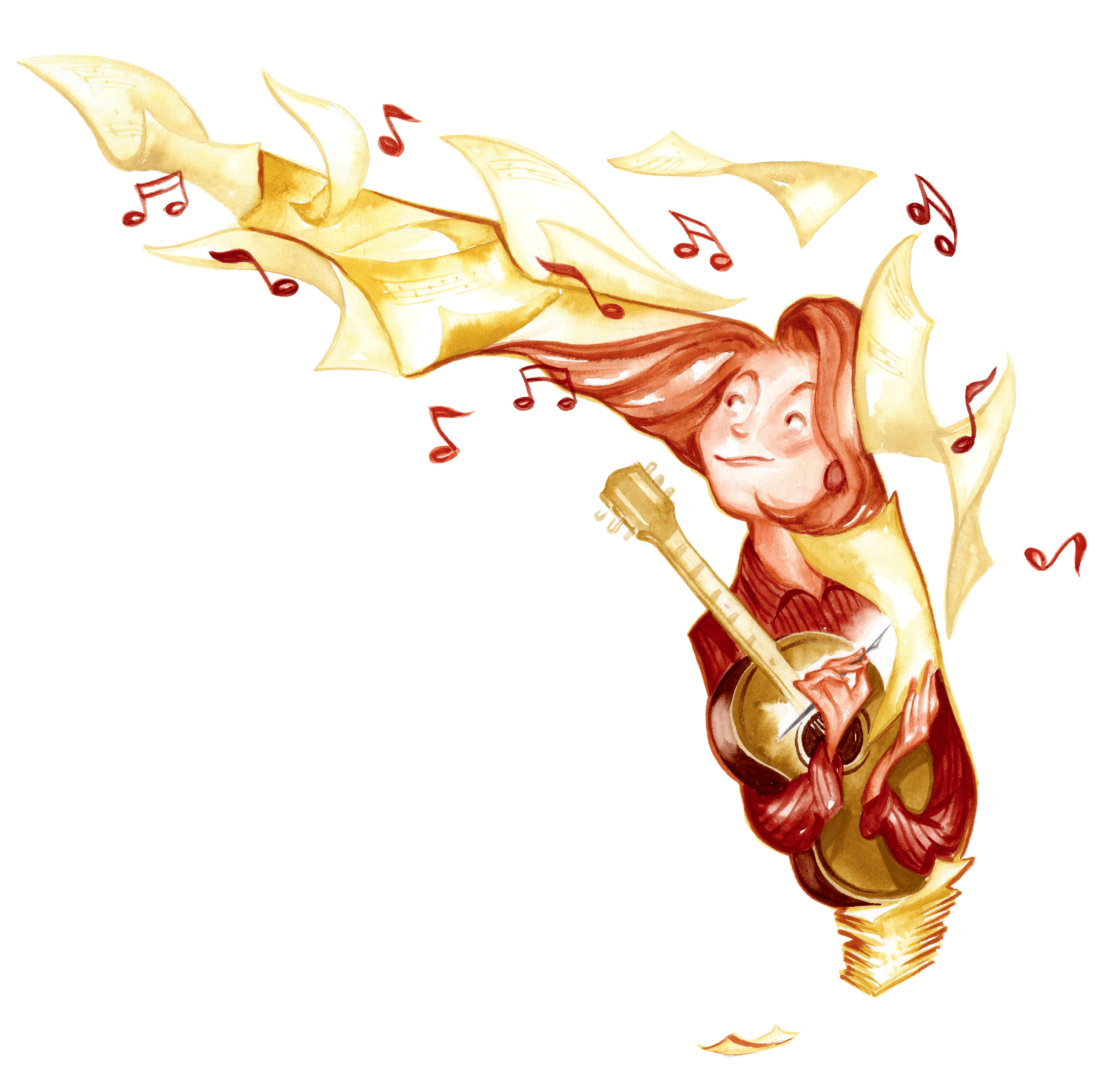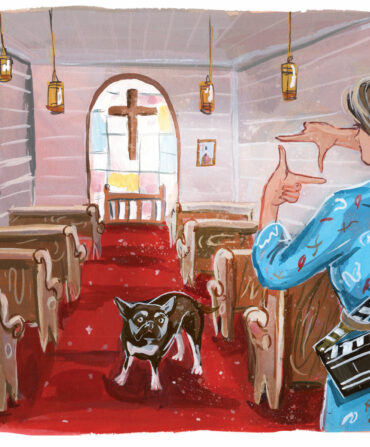MUSIC
Florida
HITTING THE WRITE NOTES
At the beginning of the new year, most Southern beach towns are waving goodbye to the holiday visitors and easing into the chilled-out snowbird season. But for the communities along the Florida Panhandle highway called 30A (which was spared the brunt of Hurricane Michael), January is a time for musical fellowship. Celebrating its tenth anniversary, the 30A Songwriters Festival (January 18–21) welcomes 175 musicians and writers to more than twenty-five venues along the famous thoroughfare in Walton County. “Most performances are stripped down, and it’s very laid-back,” says Shawn Mullins, a singer-songwriter from Georgia (you may remember his 1998 hit, “Lullaby,” or “Toes,” the 2009 number-one single he cowrote for the Zac Brown Band). “You might be sitting at breakfast next to the performer you saw last night.” Over the years, iconic songwriters such as Emmylou Harris and John Prine have performed at spaces that range from the intimate Central Square Records store in downtown Seaside to the large outdoor stage at Sandestin’s Grand Boulevard. This year, Jason Isbell, Steve Earle, and Patty Griffin will headline. During morning workshops open to all festival-goers, songwriters will share the mechanics and inspiration behind their craft, such as Chas Sandford, who composed Stevie Nicks’s hit “Talk to Me,” and Jeffrey Steele, who cowrote chart-toppers for Tim McGraw and Rascal Flatts. “Hear a song from the person who penned it,” Mullins says. “They can often sing it more convincingly than the ones who made it famous.” A portion of the proceeds will support hurricane relief efforts.
MUSIC
Alabama
HE SAW THE LIGHT
On January 1, 1953, before sunup in Oak Hill, West Virginia, country music icon Hank Williams died in the backseat of his baby-blue Cadillac on the way to a concert in Ohio. He was only twenty-nine years old and had already seen nearly a dozen of his songs top the charts, but years of drug abuse stopped his heart, and career, short. Williams had suffered from severe back pain that led to alcohol and painkiller dependency, broken relationships, and an expulsion from the Grand Ole Opry. The Hank Williams Museum in his hometown of Montgomery brings his legacy to light, including the longer-than-his years impression he left on country music. “No other artist in any field of music has ever matched what Hank Williams did in the length of time he did it,” says Beth Petty, the museum’s director. Every New Year’s Day, the anniversary of his death, rain or shine, pilgrims gather at the Oakwood Cemetery Annex at ten in the morning to lay wreaths on Williams’s grave, and then commune back at the museum for live music—this year, Virginia singer-songwriter Mary Battiata headlines—and a traditional good-luck lunch of black-eyed peas. The museum is open for tours until 1:00 p.m.—this day, even more than others, visitors pause at the famed Cadillac where Hank took his last breaths. “He did a lot more good with his songs than he did bad,” Petty says. “We think he deserves recognition for all the good.”
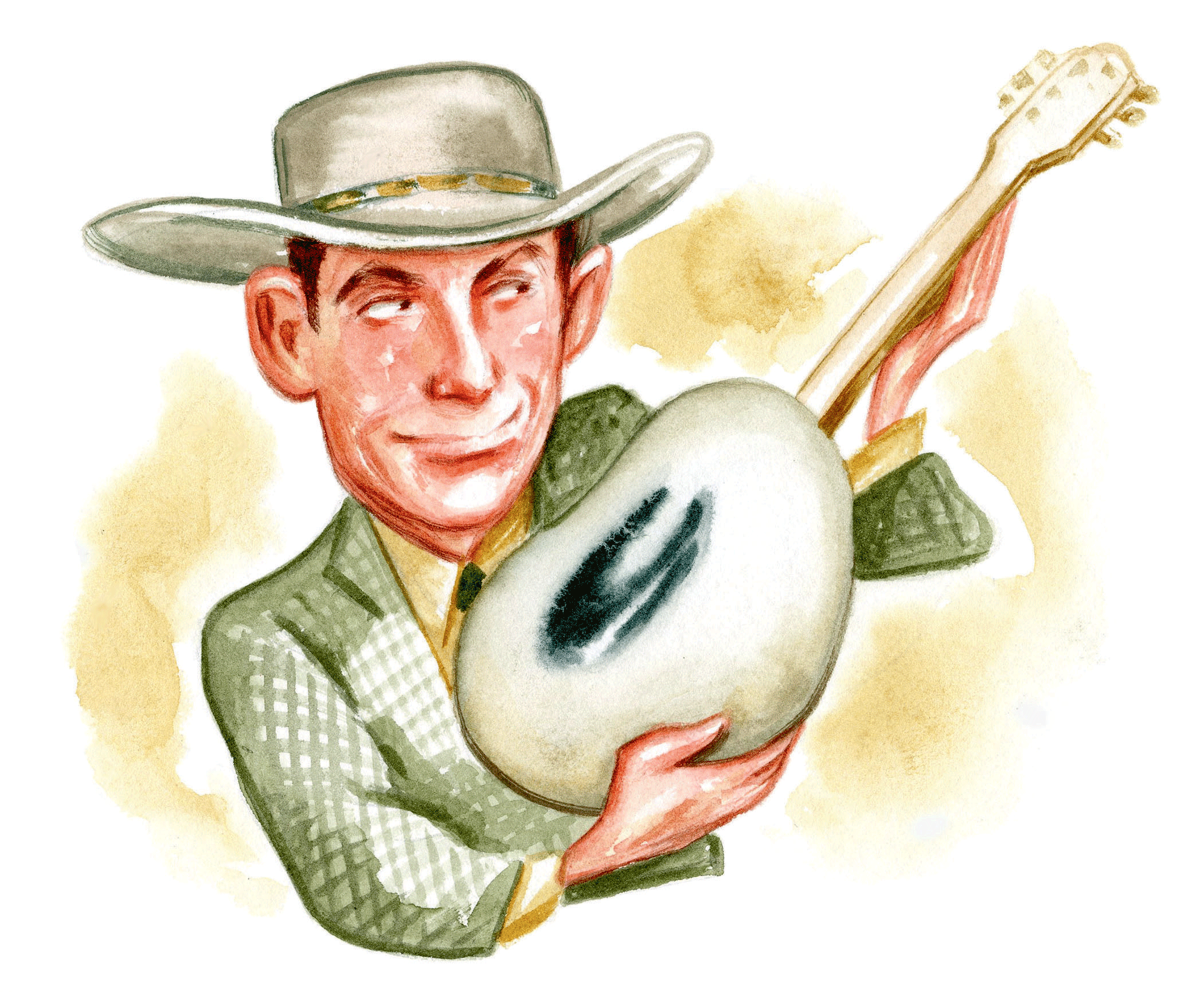
Tim Bower
ANNIVERSARY
Arkansas
GOLDEN OLDIE
Traditional Southern cafeterias are vanishing faster than you can say “blue-plate special.” In the last two years, Myrtle Beach, South Carolina’s K&W closed, Enka’s J&S in Asheville, North Carolina, shuttered, and Luby’s, a Texas-based chain, announced it would sell off fourteen eateries. But Franke’s Cafeteria in Little Rock is bucking the trend. The steam-table-lined restaurant—known for its eggplant casserole and signature egg custard pie—remains a regional favorite after a hundred years. C. A. Franke opened his storefront as a doughnut shop in 1919 and added a dining room in 1924. His son W. J. Franke took over in 1967, followed by grandson Bill Franke in 1983. Over time, the family expanded its empire to multiple locations before scaling back to three spots in the capital today. “We have customers who are old and started coming in when they were kids,” says longtime manager Bob Terrell. “Some say it’s for the blue-hair people, but it’s really a family place.” Regulars order the candied sweet potatoes, seasoned green beans, chopped steak and onions, and fried catfish. But beyond meat and potatoes (and eggplant), Terrell says Franke’s centennial staying power comes down to service—“It’s people who really want to do a good job for you.”
OPENING
Georgia
NEW ’CUE
For Wood’s Chapel BBQ, a new joint opening in Atlanta in early 2019, co-owner Ben Johnson plans to take a please-all-the-people approach. “We have a favorite place to get brisket, one we go to for ribs, one for mac and cheese,” says Johnson, who also co-owns the General Muir, Atlanta’s renowned delicatessen. “We want to make a barbecue restaurant where every component is our favorite version.” North Carolina–style whole hog will share space on the menu with Texas brisket, along with such surprises as smoked salmon and fried catfish sandwiches—all by executive chef and partner Todd Ginsberg. Although the restaurant pulls from every region of the South and a few beyond, it’s deeply committed to its home base—the historic neighborhood of Summerhill in the shadow of the former Turner Field (now Georgia State Stadium). “We’re in an old building with lots of character,” Johnson says. “It’s a place that feels connected to local people who are here now, as well as people who have been here in the past.” Finish your plate, then order a dish steeped in Georgia pride: Johnson’s family-recipe peach pie.
EQUESTRIAN
Kentucky
THE NEIGHS HAVE IT
You don’t have to be in the market for a pair of broodmares to attend the annual Horses of All Ages Sale (January 7–10) at Keeneland in Lexington. Also going before the gavel at the world’s largest Thoroughbred auction house are racing-age horses, a number of stallions, and hundreds of short yearlings. (They’re not of tiny stature; just young. All horses born in the last year officially turn one on January 1 regardless of their actual birthdays.) Aside from the steeds on display, the biggest draw is the opportunity to immerse yourself in the world of Kentucky’s top industry. “Have lunch at the Limestone Café in the Sales Pavilion or breakfast in the Track Kitchen, where you’ll find a lot of visiting trainers and owners,” suggests Amy Gregory, Keeneland’s director of communications. “Or walk through the barns—that’s where you can see potential buyers inspecting horses.” The real action, of course, takes place in the sales ring. And while the atmosphere at the January sale is slightly less heightened than at two of Keeneland’s other annual sales—yearlings in September and the breeding stock in November—prices can still hit breathtaking peaks. At the 2018 sale, a yearling sired by 2015 Triple Crown winner American Pharoah went for seven figures.
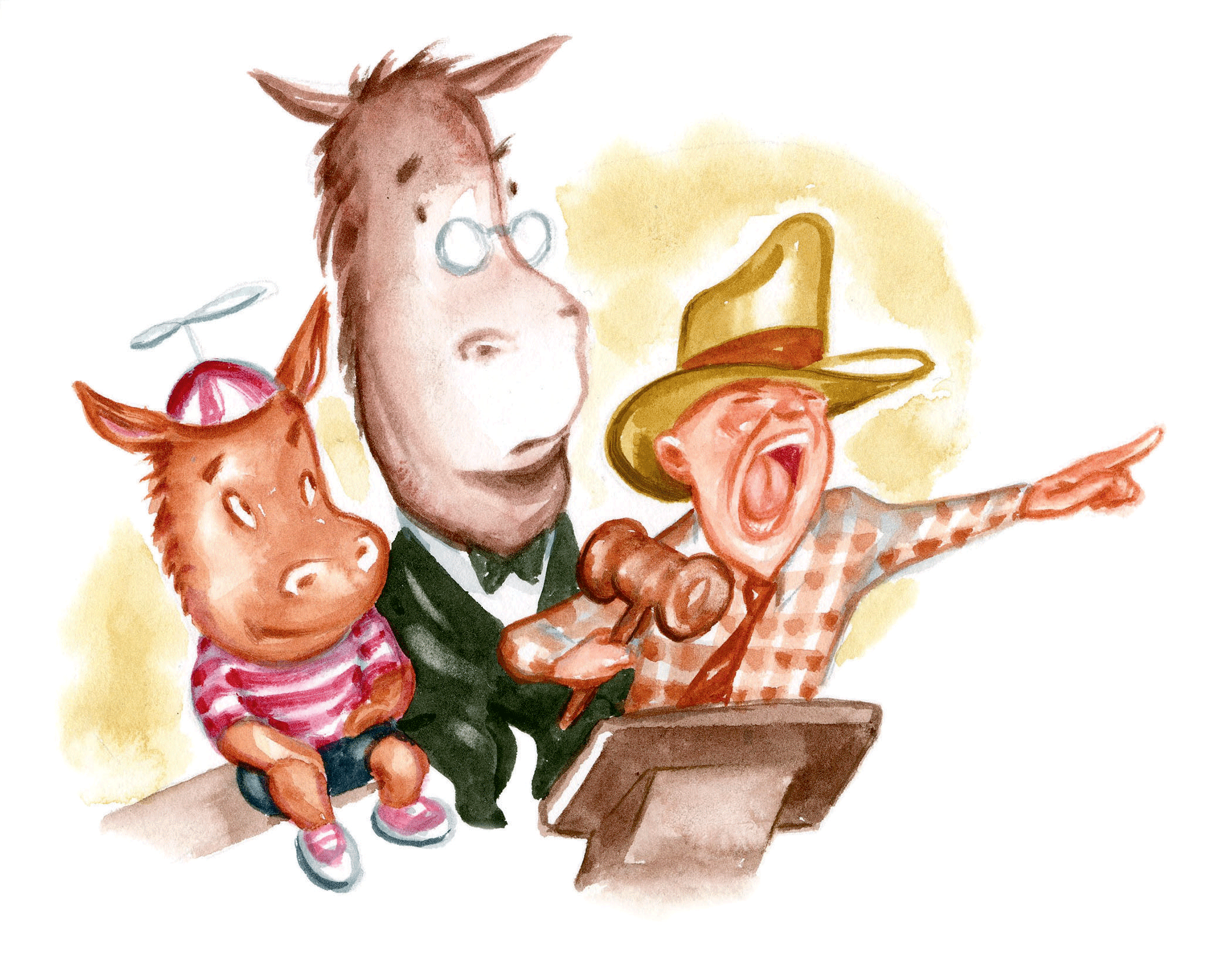
Tim Bower
ANNIVERSARY
Louisiana
ALL IS BRIGHT
New Orleans has celebrated its three hundredth birthday all year long in 2018, and winter brings one last anniversary hurrah with a bigger-and-brighter-than-ever Luna Fête (December 6–9). The Arts Council New Orleans plans four nights of two dozen free light shows on historic buildings, streets, and squares throughout the Crescent City. Think: Lafayette Street covered in swirling laser beams, and colorful shafts and waves of light dancing across the old city hall, a stately nineteenth-century building on St. Charles Avenue. Last year, the most popular installation was the Dial-a-Llama piece, in which a phone booth was connected to a talking hologram of an Andean camelid who dispensed wisdom. Some callers were after a laugh, while other seekers hoped for wise words to carry into the New Year. This December, organizers predict a crowd favorite will be the Chroma Current installation by the Brazil-born and New Orleans–based artist David Sullivan. Piazza d’Italia on Poydras Street will be awash in interactive projected sculptures linked to motion sensors. “As people move their bodies, the shadows create ripples of color,” says Lindsay Glatz, Arts Council creative director. “It will look similar to the way we create ripples on a water surface when swimming.” A baptism of color to end one year and rise into the next.
OUTDOORS
Maryland
’PEAKE SEASON
John VanAlstine knows that not everyone who steps aboard his boat, the Patricia Anne, will have the endurance to hand tong oysters. “Two licks and that’s all some ever want to see of it,” says the waterman, who’s been teaching tourists traditional bivalve harvesting since 2008. But that’s just fine. For VanAlstine, who also crabs and fishes the Chesapeake Bay, taking visitors on Watermen Heritage Tours isn’t about adding muscle to pull in his catch. It’s about educating people on the roots of his on-the-water livelihood. Each winter, VanAlstine welcomes four passengers at a time for a four-to-six-hour lesson in weight lifting the old-school way. After coasting into the Rhode River, guests use giant scissor-like hand tongs—a mid-eighteenth-century tool—to scoop oysters and then heave them aboard. “We swing the oysters over, dump them on a tall table, and cull through them,” he says. Sometimes you’ll get nothing but shell, but other times you strike gold: salty cups ready to be shucked and slurped.
STYLE
Mississippi
TAKE A SHINE
“Cheap jewelry…is worse than no jewelry at all,” writes Mississippi author Jill Conner Browne in her cult-favorite The Sweet Potato Queens’ Book of Love. “And there are very few things in life that are worse than no jewelry at all.” That’s not a problem for Ginger Hyland, who for the past eleven years has thrown the Jeweled Christmas, a jaw-dropping, floor-to-ceiling costume-jewelry extravaganza at the Towers, her antebellum mansion turned bed-and-breakfast in Natchez. The Saturday after Thanksgiving through the first Saturday in January, Hyland welcomes visitors to see the spectacle: mantels bedecked in brooches, chandeliers dripping in faux diamonds, soaring twelve-foot-tall Christmas trees covered in necklaces, bracelets, and earrings. “It takes us five weeks to decorate,” she says of the bedazzling annual endeavor. What started as a passion for glittery flea-market finds has evolved—though not all the way to the real stuff. “Every year we acquire new old pieces and work with designers in New York City who are creating costume jewelry for Broadway shows,” Hyland says. This year, Christopher Crouch of Moans Couture, whose designs have sparkled in stage productions of Aladdin and Hairspray, is scheming up one-of-a-kind pieces to be sold in Hyland’s gift shop.
CONSERVATION
North Carolina
SWAN SONG
Mother Nature is a show-off. Proof: the annual migration of more than a quarter million birds from Alaska, across the Canadian tundra, and down the Eastern Seaboard to spend the winter nesting within the Mattamuskeet Wildlife Refuge. For a few months, the waters of the 40,000-acre lake and the surrounding wetlands eighty-five miles east of Greenville are home to the largest variety of migratory birds of any refuge in the country—tundra swans, snow geese, Canada geese, twenty-two species of ducks. After birds hatch here, they imprint on the location, and by instinct find their way back each year. Birders tend to do the same. The annual Swan Days Festival (December 8) beckons nature lovers to celebrate this avian magic with guided tours that take visitors deep into the usually closed-off portions of the refuge for the best bird-sighting opportunities. On your way out, pause at the visitor’s center to learn about the ongoing renovations of the historic Mattamuskeet Lodge. Completed in 1916, the stately but now-crumbling facility started out as a pumping plant, meant to drain the lake—which it did three times in the early 1900s. The building also served as a hotel and hunting lodge before falling into disrepair. Its blue-and-white observation tower still stands as a beacon against time and the elements, and just might signal you to land here again.
SPORTING
South Carolina
IN HIS SIGHTS
With swift, soft watercolor strokes, the artist Ogden Pleissner knew how to evoke the feeling behind a place. In the case of Two Hunters, one of his undated paintings, for example, the New York native depicts the quail fields at the Okeetee Hunt Club in Ridgeland, South Carolina, and one can feel the figures’ sense of anticipation. “One thing that makes Pleissner’s work so appealing is his ability to capture the atmosphere, the climate, the humidity,” says Katie Wood Kirchoff, associate curator at Shelburne Museum in Vermont, which counts more than nine hundred Pleissner pieces in its permanent collection and organized Lying in Wait: Sporting Art by Ogden M. Pleissner, an exhibition at the Gibbes Museum of Art in Charleston that opens January 18. Two Hunters is one of forty-plus works on paper in the show, which tells the story of Pleissner’s travels north through New York and southern Canada, west to Wyoming, and south to the Carolinas and the Red Hills of Georgia. “This exhibit,” Kirchoff says, “will be a chance to see his work in a new light.”
MUSIC
Tennessee
CHASING A DREAM
“Cleaning up on Saturday mornings in my grandmama’s house, from five to seven forty-five a.m., was gospel,” says singer Keeshea Pratt, who grew up in Jackson, Mississippi. “Then we ate breakfast, and at nine o’clock, that’s when the blues started.” Pratt spent her formative years performing but walked away from music in 2011. After a seven-year sabbatical, friends encouraged her to enter the International Blues Challenge, an annual contest that draws more than eight hundred musicians to Memphis. Suffice it to say, she brought down the house. Out of 225 registered bands last January, the Keeshea Pratt Band took first place and joined a long list of celebrated past finalists that includes Susan Tedeschi, Selwyn Birchwood, and Jonn Del Toro Richardson, all of whom have gone on to illustrious careers. At this year’s competition (January 22–26), spectators can purchase a week’s pass and watch hopefuls take the stage in twenty-three venues along Beale Street—nearly every club along the historic strip takes part. It all culminates in the finals at the Orpheum Theatre. Pratt plans to encourage all her musician friends to enter, and to remind them of the lesson she learned: “Never stop believing in yourself.”
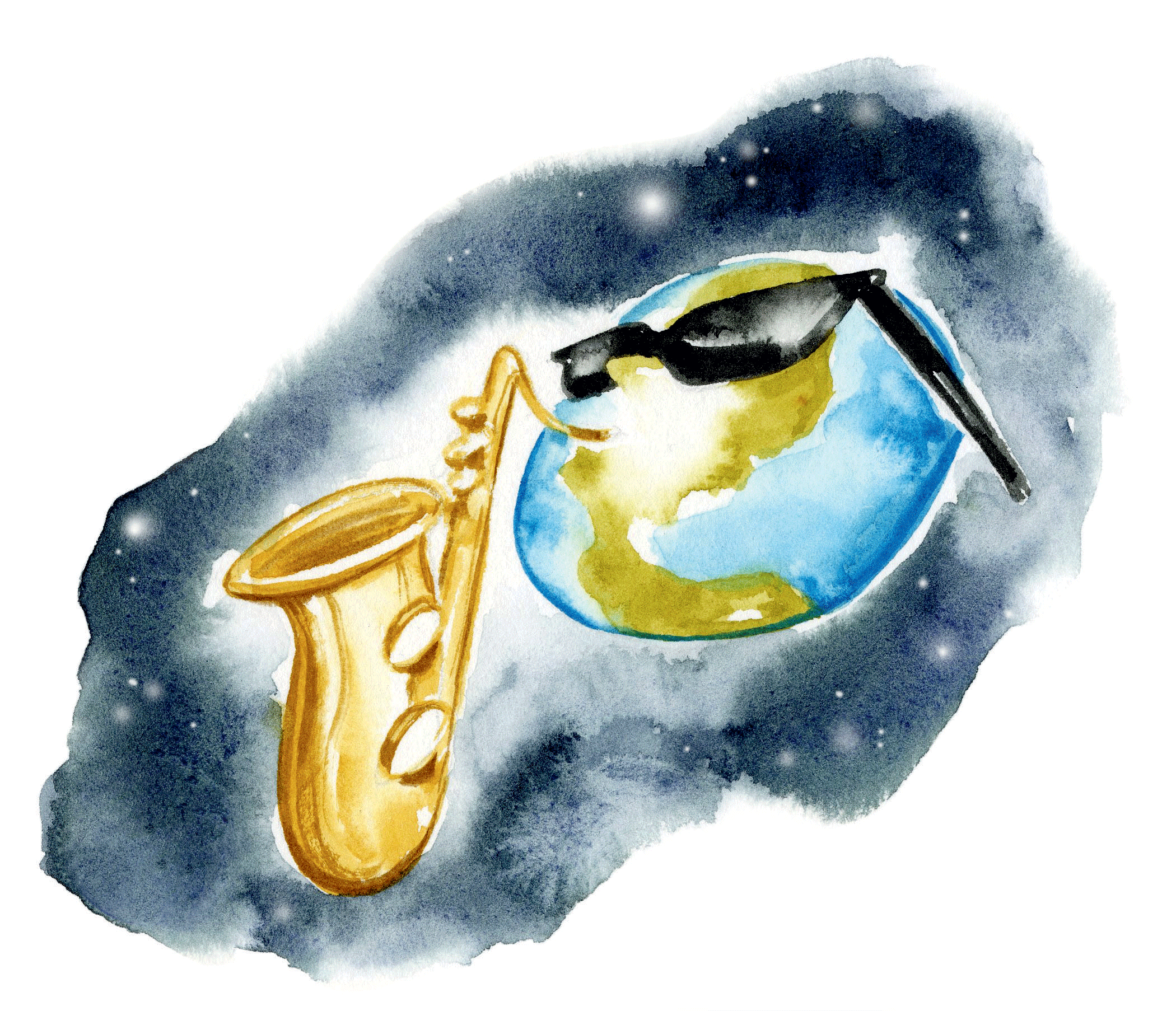
Tim Bower
FILM
Texas
CULTURAL LENS
In 2018, Black Panther dominated the box office, quickly becoming the year’s highest-grossing film and one of the most successful movie releases ever. The widespread popularity of the movie, which centers on the first black superhero in mainstream comics, illuminates a change in the film industry that Harry Eaddy, president of the Denton African American Scholarship Foundation, noticed five years ago when he had the idea to create the Denton Black Film Festival in collaboration with the University of North Texas. This year, the festival (January 23–27), among the largest of its kind in the country, will screen more than sixty films, a handful of premieres, and a showing of the 1959 classic Imitation of Life to honor Greenwood, Mississippi, native Juanita Moore, who was the fifth African American to be nominated for an Academy Award in any category for her role in the film. “There are two types of film festivals,” Eaddy says. “Celebrity driven and audience driven. This one is audience driven.” Indeed, in its inaugural year, when it lasted only a day and a half, the event drew eight hundred attendees. This year, Eaddy expects six to eight thousand.
EQUESTRIAN
Virginia
SIDE EFFECTS
For horseback riders, the leaping horn was an invention nearly as revolutionary as the saddle itself. Created in the 1830s, the innovation provided women a firm seat as they rode with a sidesaddle, enabling them to safely participate in pursuits such as foxhunting while wearing the long skirts expected at the time. That’s why Sidesaddle, 1690–1935 (through March 24), a retrospective on female equestrians in sporting art at Middleburg’s National Sporting Library & Museum, is broken into two categories: pre– and post–leaping horn. “These were highly skilled, athletic women who rode and hunted, and because of cultural norms, for a long time they did it all in skirts,” says Claudia Pfeiffer, the exhibit’s cocurator. The museum is displaying nearly sixty oil paintings, sculptures, and watercolors that illustrate the progression of women in the equestrian world. Depictions include corseted eighteenth-century ladies sitting stoically on motionless horses, early-1900s riders hurdling a fence in a hunting party, and a nineteenth-century portrayal of a donkey derby attributed to British painter Thomas Musgrave Joy: Atop a racing donkey, a woman wears a billowing white gown and a bonnet tied with a neat blue ribbon. Around the 1920s, the attire, and therefore cultural expectations, shifted—societal acceptance of women sporting breeches was a game changer—but there are still a few ride-aside loyalists: Each January, the Middleburg-based Side Saddle Chase Foundation trots out the style for cross-country and racing clinics, plus two foxhunts, complete with hounds.
nationalsporting.org, sidesaddlechase.com
PHOTOGRAPHY
Washington, D.C.
A THOUSAND WORDS
How does one choose the greatest works of photojournalism from the past seventy- five years? It involves months of culling down forty thousand images from the Pictures of the Year International archive, as Indira Williams Babic can tell you. Babic, the Newseum’s director of photography and visual resources, curated a chronological tour of postwar history’s best news images for Pictures of the Year: 75 Years of the World’s Best Photography, on display through January 20. Don’t ask her to choose a favorite. “That’s like picking among my children,” she says. And how could she when the exhibit captures flashes of war, peace, and tectonic cultural changes? The photographs, which date back to just after World War II, click through compelling scenes of American life—in 1947, two elegantly dressed black men in a segregated bus station; Richard Nixon standing on the hood of a car in Savannah on the day in 1970 when he gave a speech about his plans to end the Vietnam War; protester Ieshia Evans serenely offering her hands for arrest outside the Baton Rouge Police Department in Louisiana in 2016. “Photographers were there and brave enough to show these things,” Babic says. The images speak for themselves.

Tim Bower
FOOD
West Virginia
GO FISH
In 1910, Marion County was home to West Virginia’s largest population of Italian immigrants, most of whom worked as pick-and-shovel miners. But these Campanian, Calabrian, and Sicilian families didn’t bring just their grit to the Mountain State. They also brought their cooking, includ-
ing elaborate celebrations such as Feast of the Seven Fishes (December 8 in Fairmont). It is an Italian Catholic tradition,
but disputes continue as to what the seven fish represent—the seven sacraments or the days it took God to form the earth and rest, perhaps? Debates aside, film director and West Virginia native Robert Tinnell remembers that each year, his great-grandmother would host a couple dozen friends and relatives and serve heaping piles of calamari in red sauce, lightly breaded smelts, oysters, baccalà (salt cod), a cioppino-like stew, fried whiting, and broiled eel, all prepared on her wood-burning stove. The seafood dinner left such a lasting impression that in 2005, Tinnell published a graphic novel all about it, and the next year, the Main Street Fairmont organization partnered with him and his wife, Shannon, to launch a citywide event honoring the area’s Italian heritage. Each December, Fairmont blocks off Monroe Street for a fest with plenty of authentic Italian fare—including seven (or more) fish dishes. “On that day,” Tinnell says, “everybody is Italian.”


